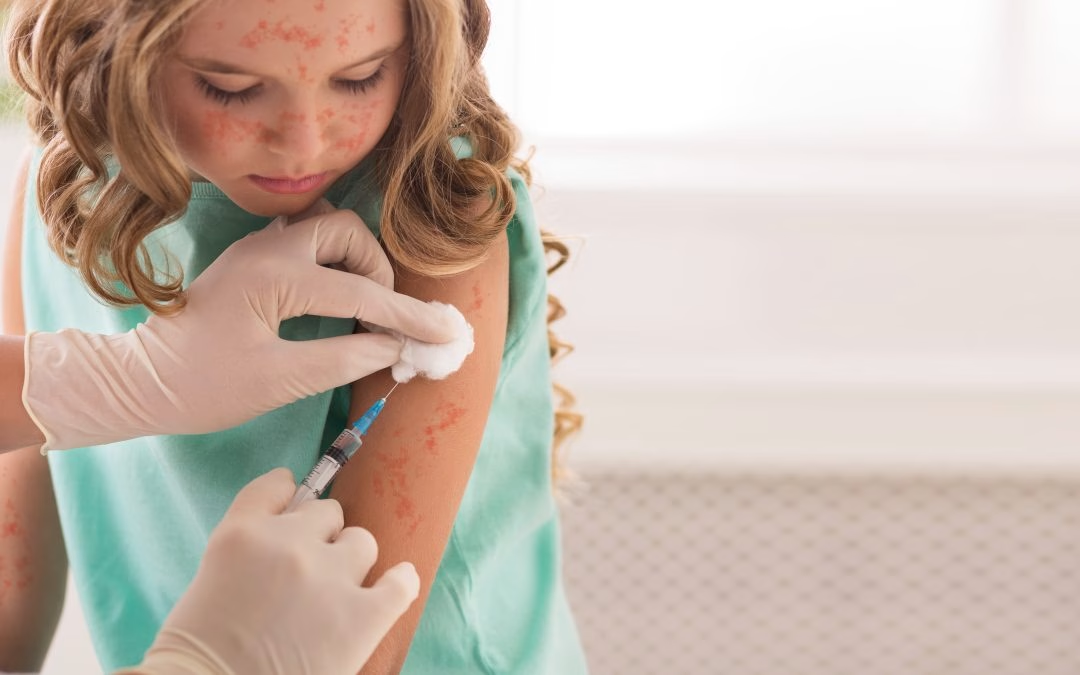
As the temperature drops, parents do their best to keep their little ones warm by layering them up. On days when it’s too cold or rainy to enjoy outdoor activities, it’s the perfect chance to explore indoor venues like PlayPalz Indoor Playground.
Children have a knack for picking up various illnesses, particularly when they’re in daycare, school, or play centers, where germs that cause pink eye and other infections are common.
Visit AFC Ooltewah if you think your child has pink eye.
Common Pink Eye Symptoms
- Watery eyes
- Blurred vision
- Green or white stringy discharge
- Increased sensitivity to light
- Crusting of the eyelids or lashes, especially while sleeping
- Redness and swelling in the white of your eye or inner eyelid
- Thick yellow discharge that crusts over your eyelashes, especially after sleep
- Gritty feeling in one or both eyes
What is Pink Eye?
Pink eye, medically referred to as ‘conjunctivitis,’ happens when the conjunctiva— the thin, clear tissue covering the white part of the eye and lining the eyelids— becomes swollen. The conjunctiva’s job is to keep your eyes lubricated.
In the U.S., both adults and children are equally affected by pink eye, with over six million cases reported each year. For school-aged kids, this leads to nearly three million missed days of school. It’s recommended to stay home for 24 hours after starting antibiotics to ensure the infection is no longer contagious.
What Causes Pink Eye?
- Viruses (very contagious)
- Bacteria (very contagious)
- Allergens, like pollen (not contagious)
- Irritants, like smoke or dust (not contagious)
- Herpes
Viral conjunctivitis is an eye infection caused by a few different viruses and is very contagious. Sometimes large outbreaks occur. It passes on its own given several days.
Bacterial conjunctivitis is an infection due to bacteria. Some bacteria are common, but others that can lead to pink eye include those related to sexually transmitted diseases such as Chlamydia and Gonorrhea. This type can also spread easily in certain settings and children who are not exhibiting fever or behavioral symptoms can usually continue attending school. This type of infection is more common in children than adults and is more prevalent from December through April.
Allergic conjunctivitis is often itchy and results from a body’s reaction to a specific allergen such as pollens, dust, mites, mold, pet dander, or cosmetics. It is most common among those who have other allergic conditions, such as asthma and isn’t contagious. High pollen counts can contribute, but it can occur at any time of the year depending on environmental factors. Allergy medication and allergy eye drops help.
Conjunctivitis caused by irritants has some overlap with allergic conjunctivitis as environmental chemicals or other airborne irritants may precipitate a non-contagious reaction. This type of conjunctivitis may also be caused by a foreign object in the eye, or in cases where contact lenses have not been cleaned properly. Burning eyes can also occur with this form.
Pink eye will resolve within two days to two weeks depending on the cause and treatment.
How to Avoid Pink Eye
Avoiding pink eye isn’t always easy, as it can spread through everyday interactions like a handshake. It can also be transmitted when you touch contaminated surfaces and then your face. Washing your hands frequently is a key step in prevention. To reduce the risk of spreading the infection, make sure to keep your child home until their fever and eye discharge have resolved.
Recommended Hygiene Practices:
- Do not touch or rub the infected eye(s)
- Wash hands often with soap and water, or sanitizer if soap and water are not available
- Wash any discharge from the eyes twice daily using a fresh cotton ball. Throw away the cotton ball and wash your hands with soap and warm water afterward
- Wash hands after applying any eye drops or ointment
- Do not share makeup, contact lenses, towels, or cups
Conjunctivitis in Babies
Neonatal conjunctivitis, or conjunctivitis in babies under four weeks old, is a serious condition that warrants an immediate doctor’s visit. The most common forms of conjunctivitis in newborns are:
Inclusion (chlamydial) conjunctivitis that passes to a baby by a mother with untreated chlamydia during birth. Symptoms typically appear 5-12 days after birth and can pass to the lungs or other parts of the body. Oral antibiotics treat the infection.
Gonococcal conjunctivitis is passed to the baby by a mother with untreated gonorrhea during childbirth. Conjunctivitis typically begins in the baby’s first 2-5 days. Intravenous or intramuscular antibiotics are required to prevent the baby from developing ulcers on the cornea or becoming blind.
Chemical conjunctivitis can result from the antimicrobial drops given to newborns to prevent bacterial infection. Symptoms should abate within 36 hours (or three days).
Some other viruses and bacteria can cause conjunctivitis in newborns such as the ones that can cause genital or oral herpes, which is less common, and even the bacteria that normally lives in a woman’s vagina. Antibiotic ointments or drops treat these cases.
When to Seek Medical Care
Your child should see their doctor if they have any of the following:
- Pain in the eye(s)
- Sensitivity to light or blurred vision that does not improve when discharge is wiped from the eye(s)
- Intense redness in the eye(s)
- Worsening or unimproved symptoms, including pink eye thought to be caused by bacteria which does not improve after 24 hours of antibiotic use
- A weakened immune system, for example from HIV infection, cancer treatment, or other medical conditions or treatments
- A preexisting eye condition
- Decrease in vision
Soothing Pink Eye
Cold compresses can help reduce the discomfort and swelling associated with conjunctivitis. Always use a clean compress for each application. Artificial tear drops may offer some relief, but avoid redness-reducing drops, which can make irritation worse. If you use contact lenses, ensure they’re properly cleaned and refrain from wearing them until your eyes have fully recovered to avoid reinfection.
If you or your child is experiencing the symptoms of pink eye, visit AFC Urgent Care Ooltewah for care.


